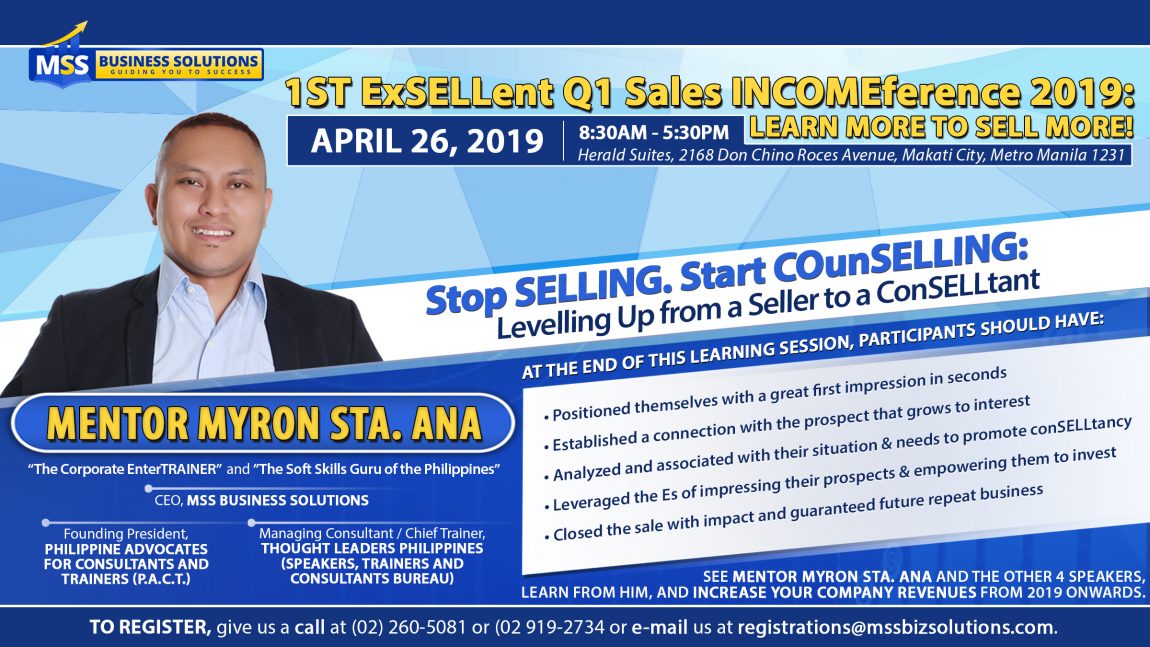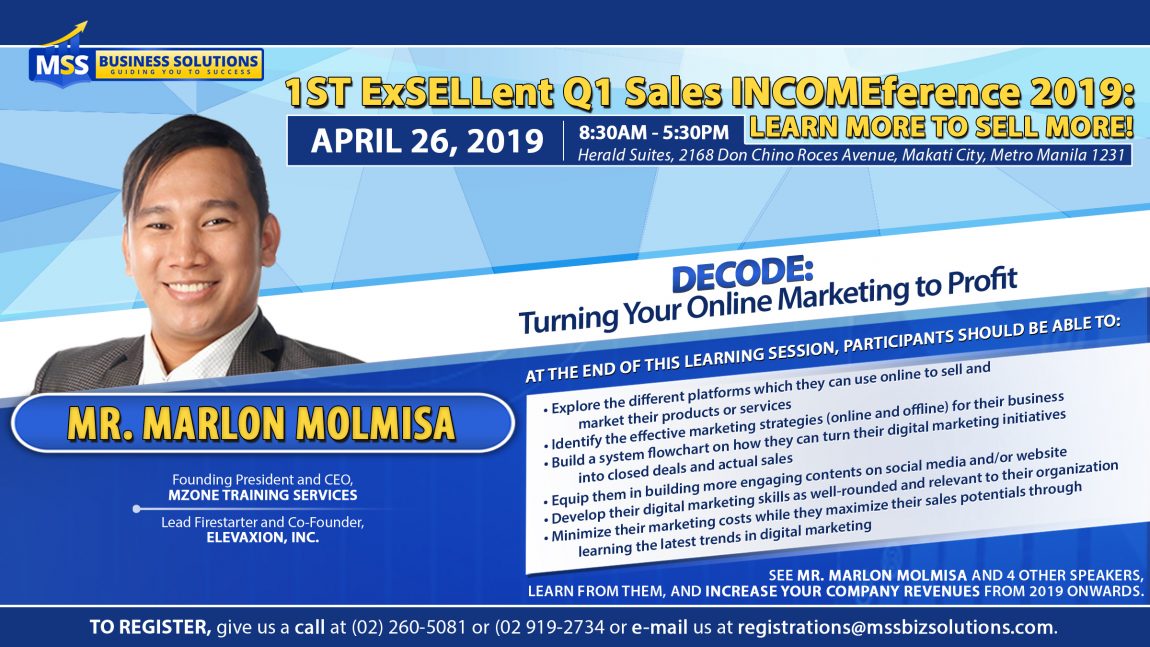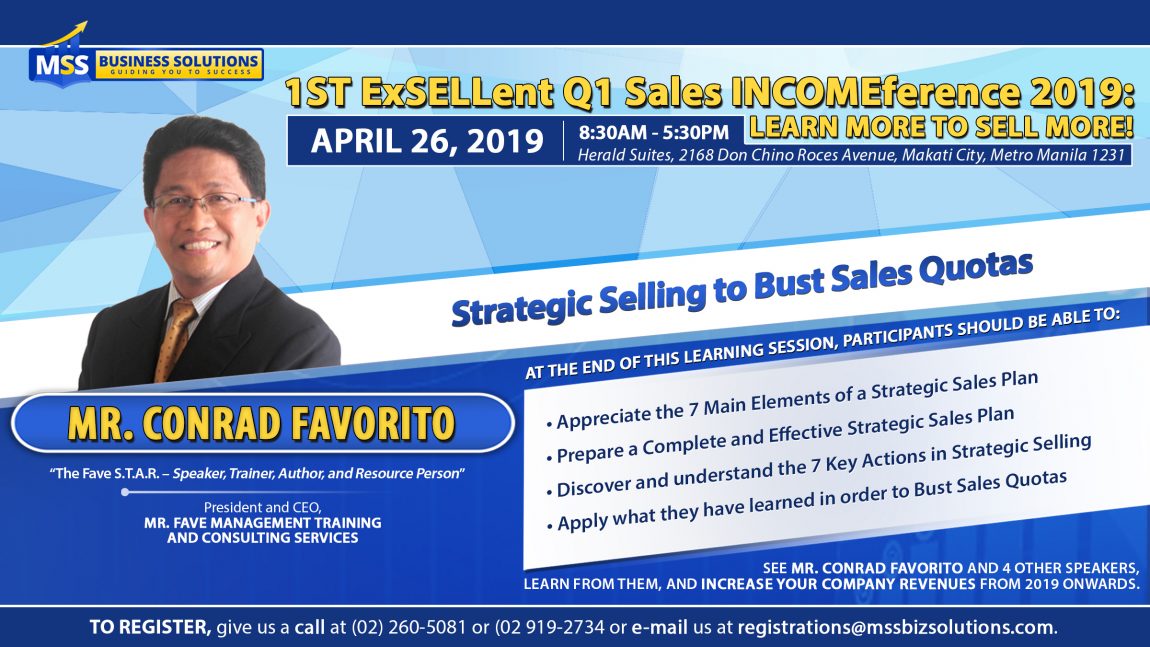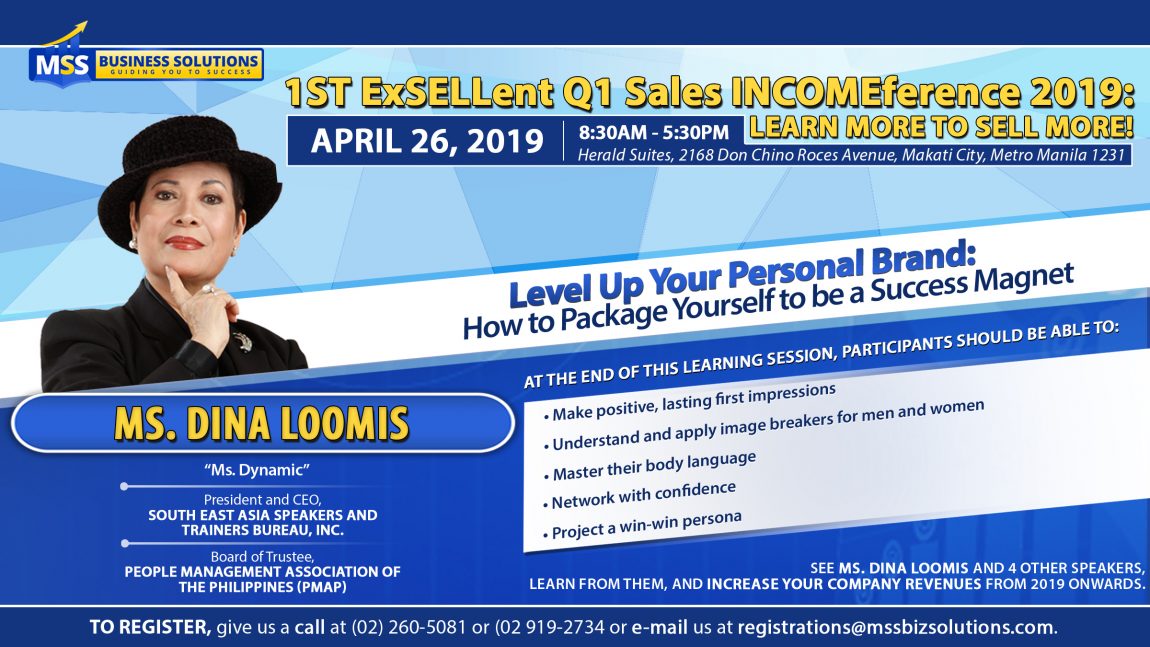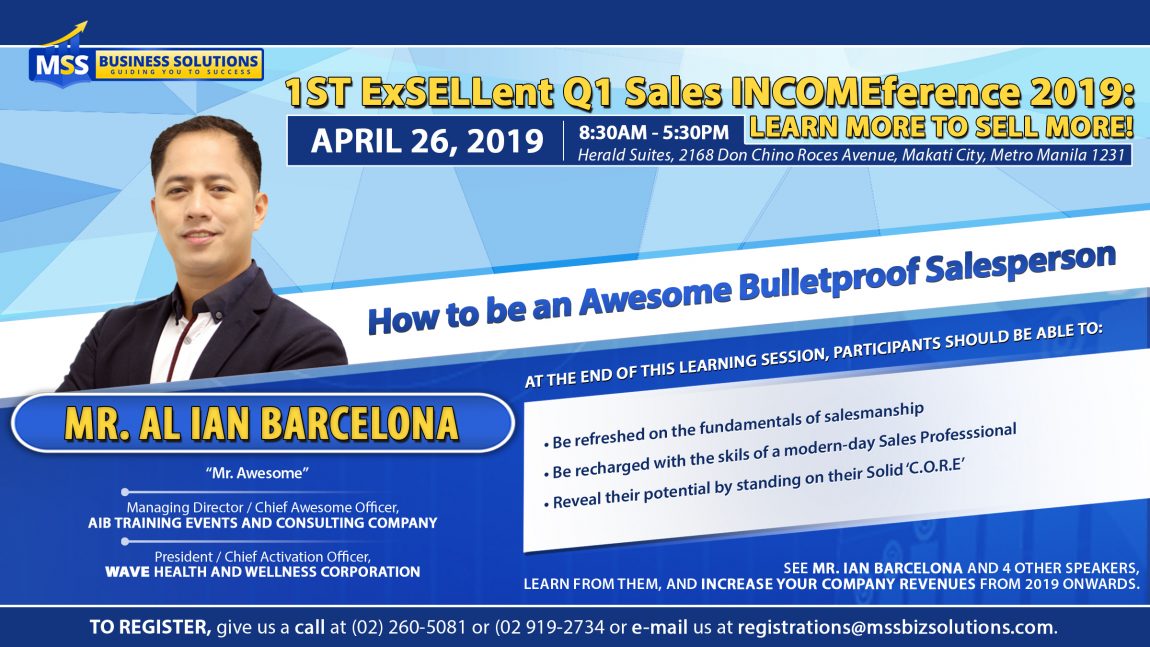The post The Ultimate Guide to Building a Culture of Continuous Learning in the Workplace appeared first on MSS Business Solutions - a Top HR Training and Consultancy Company in the Philippines.
]]>In this article, we’ll explore actionable steps to create a workplace environment that prioritizes learning, empowering your teams to evolve with confidence.
Why Continuous Learning Matters in the Modern Workplace
The rise of digital transformation, hybrid work models, and global competition has reshaped how organizations operate. Here’s why continuous learning is critical:
- Staying Relevant: Skills that were cutting-edge yesterday may be outdated tomorrow. Continuous learning ensures your workforce stays ahead of the curve.
- Boosting Employee Engagement: Employees who feel supported in their growth are more motivated and engaged.
- Driving Innovation: A learning culture encourages creativity, experimentation, and the development of breakthrough ideas.
For HR managers and training leaders, embedding this culture is a game-changer for attracting and retaining top talent.
Characteristics of a Learning-Centric Organization
Organizations that prioritize learning often share these traits:
- Leadership Commitment: Leaders actively promote and participate in learning initiatives.
- Accessible Resources: Employees have access to training materials, workshops, and mentoring opportunities.
- Recognition and Reward: Efforts to upskill are celebrated and rewarded, reinforcing the importance of growth.
- Integration with Workflows: Learning is not a separate activity but embedded in daily tasks and projects.
Steps to Build a Culture of Continuous Learning
Here’s how HR and training managers can lead the charge:
a. Conduct a Skills Gap Analysis
Start by assessing the current skills within your organization and identifying gaps. What does your team need to succeed in the future? A structured analysis helps tailor learning initiatives to real needs.
b. Invest in Relevant Training Programs
Partner with a trusted training provider to deliver programs aligned with your organization’s goals. Focus on areas such as leadership development, digital skills, and emotional intelligence to future-proof your workforce.
c. Leverage Technology for Learning
Adopt e-learning platforms, microlearning modules, and virtual training sessions to make learning more accessible. Technology allows for flexibility and personalization, especially in hybrid work environments.
d. Create Mentorship Opportunities
Pair experienced employees with those eager to learn. Mentorship not only facilitates knowledge sharing but also strengthens workplace relationships.
e. Measure and Optimize
Track the impact of your learning initiatives using metrics such as employee performance, engagement levels, and retention rates. Use this data to continuously improve your programs.
Overcoming Challenges in Promoting Continuous Learning
While the benefits are clear, creating a learning culture comes with its challenges. Here are a few and how to address them:
- Resistance to Change: Communicate the value of learning to employees and tie initiatives to career growth.
- Time Constraints: Integrate bite-sized learning opportunities into daily workflows to make participation easier.
- Budget Limitations: Start small and scale up. Many free or low-cost resources can complement formal training programs.
The Role of HR and Training Managers
As the architects of organizational growth, HR and training managers play a pivotal role in embedding continuous learning. Here’s how:
- Advocate for Learning: Get buy-in from leadership and secure budgets for impactful training initiatives.
- Stay Ahead of Trends: Keep an eye on industry developments to ensure your programs remain relevant.
- Act as Coaches: Support employees in setting learning goals and navigating their development journeys.
Tools and Resources for Continuous Learning
Empowering employees to embrace learning is easier when the right tools are in place:
- Learning Management Systems (LMS): Platforms like Moodle or TalentLMS streamline training delivery and tracking.
- Webinars and Online Courses: Sites like Coursera, Udemy, and LinkedIn Learning offer diverse learning opportunities.
- In-House Workshops: Partner with training providers to deliver tailored sessions that align with your company’s objectives.
Conclusion: A Future Built on Learning
Building a culture of continuous learning isn’t just about training—it’s about creating an environment where growth is celebrated, encouraged, and integrated into everyday work. For HR and training managers, the journey starts with taking bold steps to prioritize learning as a strategic business driver.
At the end of the day, organizations that invest in their people’s growth aren’t just preparing for the future—they’re creating it.
Are you ready to empower your team with tailored training and consultancy solutions? At MSS Business Solutions, we specialize in helping organizations like yours build learning-centric workplaces that thrive in a competitive world.
The post The Ultimate Guide to Building a Culture of Continuous Learning in the Workplace appeared first on MSS Business Solutions - a Top HR Training and Consultancy Company in the Philippines.
]]>The post Why Companies Must Plan Strategically Every 3 to 5 years appeared first on MSS Business Solutions - a Top HR Training and Consultancy Company in the Philippines.
]]>If we fail to plan, we plan to fail.
Not being consistent with strategic planning or worse, not planning at all is like walking or running non-stop but not going in any clear and specific destination. And companies are no different. It’s like the business just goes through the drill every year and just settles for still being able to exist and managing not to close down. Mediocre. Complacent.
The danger with not strategizing at least every year (Tactical Planning) is that companies tend to keep on doing the same things but expect to be getting different or better results. It doesn’t work that way.
Companies end up being transactional.
When we say transactional, what we mean to say is too routine to a fault. Current customers or clients avail of a product or a service and then the company just provides or delivers. It just becomes a vicious cycle. As long as the company is earning, meeting customer demands, and paying for its employees’ salaries, not a problem. Well, that’s not the case.
Unfortunately, no company out there would just like to remain stagnant. All companies desire to grow, increase their revenues and profits, hire more people, innovate and introduce more value-adding products and/or services, or widen their influence and reach in the market.
Now, the question is how can all of these ambitions be realized if a company doesn’t do Strategic Planning and just keeps on doing the same things?
What doesn’t challenge us, doesn’t change us and what doesn’t change us doesn’t help or make us progress.
Companies must be planning strategically every 3 to 5 years. At least, there must be tactical planning every 1 or 2 years, if not strategic planning.
In these must-do company strategic planning sessions, the company gets to revisit its Vision, Mission, and Core Values to check the following:
- Has the vision already been achieved? Yes or No? Even if not yet, is there a need to update it considering the owners, investors, and/or top management’s brand new directions?
- Does the mission still reflect the company’s reason for existence? Yes or No? If new products and/or services are being introduced, new markets are being penetrated, and/or new focuses are being emphasized, unavoidably, the mission must be changed.
- Do the core values still mirror the culture that needs to be promoted and strengthened to empower and engage people to achieve the needed results? If not anymore, there’s this imperative that they must be modified too.

Unless there’s Strategic or Company-wide Planning, the need to update these VMV statements will never be realized to begin with.
Strategic planning sessions are also an opportunity to do a Self-Critique.
When we say self-critique, the company gets to assess its internal strengths and internal weaknesses.
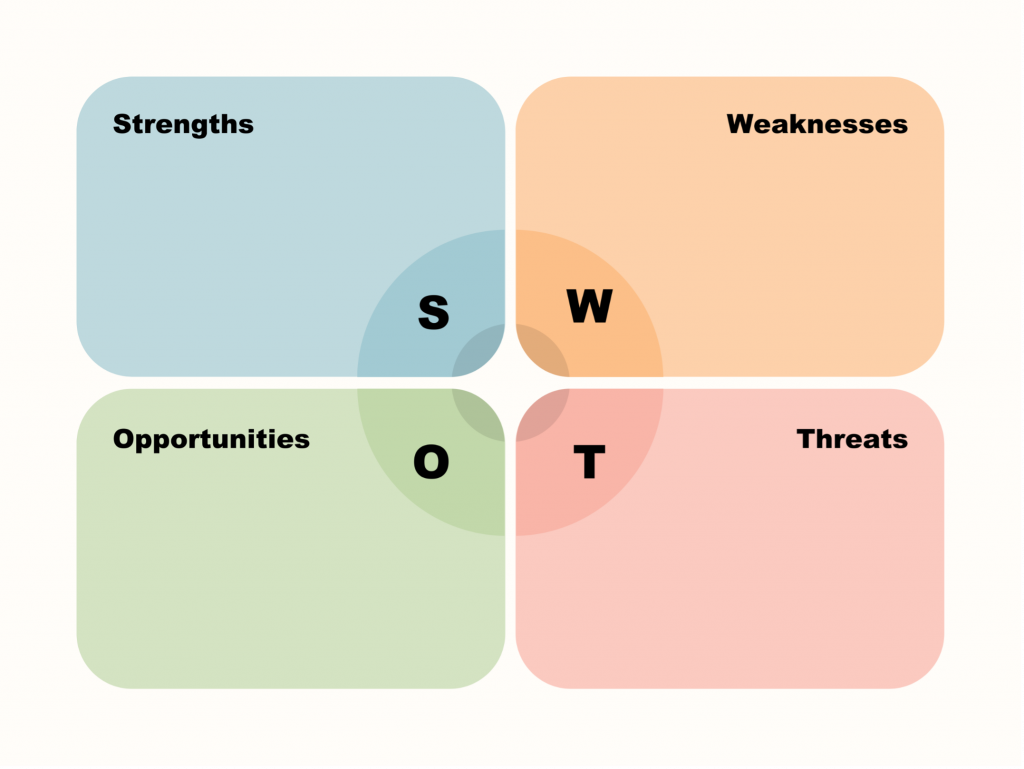
The internal strengths show what the company has been doing well that it just has to keep on doing, improve doing, or level up. The internal weaknesses, on the other hand, show what aspects of doing business must be corrected, replaced, enhanced, aligned, timed, and/or eliminated (if applicable) inside to be better than the previous year/s.
In self-critique, the company gets to explore opportunities and anticipate threats that happen outside of the company as well.
The external opportunities present positive situations that the company can take advantage of to beat the competition, to enhance its operations, to increase its market share, to improve the relationships with the government and other stakeholders, and the like. The external threats on the other hand are those negative scenarios that must be countered, avoided, or eliminated if the company doesn’t want to encounter serious situations in the future that might lead to business losses, bankruptcy or worse, closure.
Imagine if a company doesn’t plan strategically and just welcomes new years just going through the drill? These internal and external evaluations will never be looked into because the management doesn’t involve itself in such cerebral sessions. Where and how do the company get its strategies? It’s only in Strategic Planning sessions or Businesses that these matters are analyzed.
And last but not least, it is through strategic planning sessions that companies get to set their new Strategic Goals and Objectives for the next years as results of their internal and external company analyses.

The Strategic Goals answer the question, “What are we going to do moving forward given our internal strengths, internal weaknesses, external opportunities, and external threats (S.W.O.T. Analysis)?”. The Strategic Objectives, on the other hand, answer the question, “How are we going to achieve these Strategic Goals?”.
Therefore, strategic initiatives or activities are planned and implemented to respond to the results of the internal and external analyses. They become the bases of the Strategic Action Plans that will cascade down to the divisions, departments, and/or teams for execution at their level. They become the bases of the new or updated Key Result Areas (KRAs) and Key Performance Indicators (KPIs) of the company and its departments and employees. They become the bases of the budgetary priorities for the next year or years.
Imagine if a company never plans strategically or never does this consistently. These important pillars that aid in company growth and development will never be looked into because they don’t give themselves opportunities in which to do these things. We all know they’re usually analyzed in comprehensive strategic planning sessions.
So, these are the answers to the question, “Why Companies Must be Planning Strategically Every 3 or 5 Years”. In other words, it is that important. It is that mandatory. It is that critical.
How about your company? When was the last time you organized your own purposeful Strategic Planning with your key leadership? When will you do your next one? If not this year, when? Do you even know how to do it?
MSS Business Solutions is one of the authorities in helping companies do Strategic Planning in their respective companies. If you would like us to help you plan strategically for your next 3 to 5 years or so or at least plan tactically for the next 1 or 2 years, give us a call at (02) 725568, email us at info@mssbizsolutions.com or message us here.
If you would like our expert trainer-facilitators to train you on how to do Strategic Planning yourselves, read the following links below:
Strategic Planning Training in the Philippines
You can also read our related training outlines below:
Strategic Management Training in the Philippines
Strategic Thinking Training in the Philippines
Strategic Thinking in Sales Training in the Philippines
The post Why Companies Must Plan Strategically Every 3 to 5 years appeared first on MSS Business Solutions - a Top HR Training and Consultancy Company in the Philippines.
]]>The post 1st ExSELLent Q1 Sales INCOMEference 2019 appeared first on MSS Business Solutions - a Top HR Training and Consultancy Company in the Philippines.
]]>Learn More to Sell More
April 26, 2019
8:30am – 5:30pm
HERALD SUITES
2168 Don Chino Roces Avenue, Makati City 1231
REGISTER NOW! CALL US AT
260-5081 | 697-0960 | 919-2734
(Globe) 0915-749-5467
(Smart) 0939-217-2755
OVERVIEW:
How have your 1st quarter sales been going for 2019? Great, good, or bad? Have you been able to meet or exceed your sales quota or not? If YES, kudos to you and your sales team then. If NOT, then we have a lot to talk about.
You know what? Even if you have, I’m very sure you’ve been planning to exceed them, haven’t you? Now, if they have just been met and not exceeded, what’s been happening? What has happened wrong? What hasn’t been happening that should be happening?
Make sure you educate, equip, and encourage your sales force with the right and sufficient new knowledge, skills, and attitude that are practical, success-leading, and results-oriented.
Send them to a sales learning event highlighted by five (5) highly-experienced, undoubtedly time-proven, and very credible practitioner-resource speakers who haven’t only been there and done that but are also go-to speakers, trainers, and consultants, in best practices in sales in the Philippines.
We’ll take care of putting them in a learning experience where they learn and have so much fun at the same time.
See you at the 1st ExSELLent Q1 Sales INCOMEference 2019!
MYRON STA. ANA
The Corporate EnterTRAINER and Soft Skills Guru of the Philippines
Chief EnterTRAINment Officer (CEO), MSS Business Solutions
Founding President, Philippine Advocates for Consultants and Trainers
MARLON MOLMISA
Founding President and CEO, Mzone Training Services
Lead Firestarter and Co-Founder, Elevaxion, Inc.
CONRAD FAVORITO
The Fave S.T.A.R. – Speaker, Trainer, Author, and Resource Person
President and CEO, Mr. Fave Management Training and Consulting Services
DINA LOOMIS
President and CEO, South East Asia Speakers and Trainers Bureau, Inc.
Board of Trustee, People Management Association of the Philippines (PMAP)
AL IAN BARCELONA
Mr. Awesome
Managing Director and Chief Awesome Officer, AIB Training Events and Consulting Company
For inquiries, give us a call at (02) 919-2734, (02) 260-5081, or (02) 697-0960 or email us at info@mssbizsolutions.com. See you there!
The post 1st ExSELLent Q1 Sales INCOMEference 2019 appeared first on MSS Business Solutions - a Top HR Training and Consultancy Company in the Philippines.
]]>The post A lesson on training and development for HR and training managers appeared first on MSS Business Solutions - a Top HR Training and Consultancy Company in the Philippines.
]]>I’ve observed that every time they or an associate or assistant of theirs looks for a training provider in the Philippines that they would outsource their in-house corporate training need to, they just ask for a generic proposal without explaining to the training company being considered necessary answers to questions like:
- What’s the cognition, competency, or character gap or performance improvement need?
- What is/are the root cause/s of these gaps?
- Are they sure training is the intervention to begin with? What are their bases for knowing or how did they arrive at picking training as the corresponding solution?
- If training is really the needed solution/intervention, how did they identify the training type they’re looking for is what will really close the gap or provide the improvement need?
- What are the goal and objectives of the program?
- What learning outcomes do they expect the trainees should experience and gain after training?
- How long must the training be for? If they determine a duration, what’s their bases for being sure how long or short it is will do the trick?
- How many participants should benefit from the program?
- Who are these participants and are they really going to need the training program?
More often not, they simply request an off-the-shelf proposal and will just revert to any of the bidders if their proposition gets them interested.
This is not how it’s supposed to be done. Even if the next step, once they identify the best-looking training outline, is they will still sit down with the shortlisted candidate and discuss the tailoring or customization of the training need, the next steps to be taken might surely go wrong if the first step was already done incorrectly.
HR or training staff from their heads (vice presidents, directors, senior managers, and managers) down to their personnel (assistant managers, supervisors, generalists, specialists, and associates/assistants) must be required to get the right proposals the right way even when they’re still gonna filter them anyways.
They can’t just tell a training vendor, trainer/speaker supplier, or training company to turn in a proposal when they request, let’s say, a leadership training. They must already explain the following in addition to the details mentioned above:
- If the beneficiaries of the training program are newly-promoted, tenured but untrained, or tenured and trained but still need to learn more.
- Is the leadership need basic or advanced? Had some or all of the participants already undergone a similar training with the same company or previous companies before or are they taking up a leadership training for the first time?
- Is the need even corporate training facilitation or just a professional resource speech on the topic sufficient?
- When and where will the training be held?
- Will any default program on leadership in stock suffice or the need calls for customization or tailoring?
- Are there specific leadership areas for improvement (weaknesses or problems) that have to be addressed or is the training merely to equip them with anything they might need in the performance of their job?
There’s no danger looming if the requesting company doesn’t have to pay anything at all. However, they’re going to invest money in this consultancy need. Therefore, so as not to waste their organization’s precious funds, they’re better off being critical with what they need, how it’s going to be provided, and who provides it.
One mistake and they’re going to end up paying for an expensive training program from which their employees get nothing or only get a little once everything has been said and done. Worse, they don’t get to apply back to the workplace a single thing. No Return on Investment at all. Just experiencing training for the heck of it.
Therefore, through this article, one very particular lesson for HR and training managers in the Philippines that I love to emphasize and share is to provide our employees what the right learning and development interventions that will effectively correct, replace, enhance, or add on to their knowledge, skills, and attitude by:
- Identifying what the performance improvement needs are
- Analyzing the root causes of these needs
- Determining very carefully what available and doable intervention is going to provide these needs
- Requesting a detailed proposal from training consultants or training providers in the Philippines if they decide to outsource
- Critiquing submitted proposals to assess whether the training consultancy companies really know what they say or do.
When HR or training managers and employees think like this, there shall be no mistake in learning and development and no unnecessary costs will have to be wasted.
The post A lesson on training and development for HR and training managers appeared first on MSS Business Solutions - a Top HR Training and Consultancy Company in the Philippines.
]]>The post To improve performance, understand nonperformance appeared first on MSS Business Solutions - a Top HR Training and Consultancy Company in the Philippines.
]]>When an internal client brings to their attention an issue with their employees’ performance, guess what. Expect that they only have one known intervention in mind, classroom training.
While I should be happy that they always think of classroom training, as this means more business for external training providers like me, I don’t worship money. I’m more concerned about companies correctly addressing workplace learning and performance so the company they serve earns more and the employees they work with earn as well in return.. I’m not selfish. After all, my mantra as a training consultant in the Philippines is to educate, equip, encourage, engage, entertain, empower, and escort people to success and not to extort money from anyone.
Just to give a few examples of proofs that some HR heads still need to learn more about arguably the most downplayed HR function, training and development or learning and development, let me share personal experiences.
There’s this one company who invited me to present my existing programs on some topics. These topics, by the way, are programs they determined themselves prior to the meeting. I went there and presented exactly the modules that they were looking for only to be interrupted in the middle of my presentation by one of the heads revealing to me that honestly, they don’t know what they need. Worse, they told me that actually, they had already undergone those programs before and were not sure if they would need to take up intermediate or advanced versions of the same programs or just go through allied interventions reinforcing the same topics.
It was disturbingly surprising to hear what they had said to think that there were also representatives from HR in the meeting. Oh my, were they clueless and speechless themselves. I ended up offering consultancy instead to thoroughly determine first what needed to be done in relation to their predetermined needs. After all, they would be investing precious company money and they wouldn’t want their funds to just go down the drain.
Another usual experience I would have is some HR managers contacting me requesting facilitation of a team building program when after going through a detailed investigation and assessment, it appears they need another solution.
Yet again, another HR manager would request a classroom training on this or that topic when the underlying challenge is attitudinal and would require sort of motivational or inspirational programs instead.
This is an increasingly alarming situation. Compensation and Benefits is important. Sourcing and Recruitment is equally significant. Organization Development is a must. Labor Relations is a requirement by law. Employee Engagement is crucial. Nonetheless, training and development, learning and development, talent development, or however else this is called in a company is no doubt on the same level. It should not be set aside. HR practitioners, regardless whether General HR and this HR function are completely separate departments, must brush up on their knowledge of this critical topic or better yet, enhance the width and depth of their understanding.
Training, online or offline, is not the ALWAYS and ONLY solution. There are times that it does not weed out the cause of the under-performance or nonperformance because the root cause of either of these predicaments can’t be addressed by this intervention to begin with.
In order to improve performance and find out whether training would do the trick or not, under-performance or nonperformance must first be studied. What causes employees to come short of their job’s expectations in the first place?
Let’s keep Holistic Growth and Development and take it to heart.
Our totality as people is made up different aspects. I call it KSA-EMJ.
K is Knowledge. It’s what we already know, what we don’t know yet, what we should know based on our job’s expectations, or what we believe we know but is, matter of fact, an incorrect understanding of what we ought to know. If we would employ a thorough needs analysis or assessment, we would find out if the under-performance or nonperformance results from any of these.
S is Skills. It’s what we can do, what we don’t know how to do yet, what we should do in order to produce the right products and offer the correct services, and what we believe we can do well but is, in reality, an incorrect way of doing what we ought to do. Once again, if correct root cause analysis is to be done, we would arrive at a conclusion that perhaps, skills need to be refined or new skills should be introduced.
A is Attitude. It refers to people’s attitude towards their work, towards what they are capable of doing, towards their company, and towards other people. Digging deep would actually reveal that probably, there is no issue with knowledge or skills. The issue most likely lies in our corporate talents’ attitude and their values just have to made positive and their attitude corrected and enhanced.
E is Environment. Maybe, we have on board capable people who know what they ought to know, can do well what they’re supposed to do right, and are self-motivated and sufficiently-inspired to give their best at work. However, do we ever look into the organization, division, department, and team they belong to? Does the group they belong to supportive of their motivation or inspiration and nurturing of their knowledge and skills? Are they given opportunities where they are actively involved and empowered to make decisions on their own with minimal to zero supervision? Are they provided the resources they need to perform their functions well and up to expectations? Do the employees in question report to and work with competent and responsible managers?
M is Motivation. Let’s add Inspiration there too. Can we confidently tell ourselves our employees are motivated to perform at their best at work and help the company realize its vision and carry out its mission? Are they inspired by the leaders they’re supposed to look up to? Are they one (aligned) with the company in practicing its core values and making true its goals and objectives? Is it really an ability issue or a motivation problem? All along, it could also be external issues with family, friends, and neighbors that are getting in the way of their performance getting up to standards.
J is Job-Person fit. How sure are we that they love what they do and what they do loves them back? Are they compatible with their chosen job? Are they really where they’re supposed to be? Maybe, it’s not us but them. This is usually already beyond the realm of what’s obvious but it doesn’t hurt to play with this idea and utilize scientific methods to pin down whether this can be factored in or not. Probably, too, the person and the job are a good match. However, their relationship just needs to be aligned in order to usher in the ideal performance.
The reason why classroom training doesn’t always work is that nonperformance or under-performance, so to speak, is not always a situation of the employee needing to review or learn more. HR practitioners, especially those in learning and development, need to look from different angles and check whether there is a need to:
- improve
- replace
- add more
- correct
If learning and development is practiced correctly, perhaps the right intervention or solution could be any of the corresponding programs below:
| Training | Organization Development | 360-degree feedback |
| Team Building or Team Culture Building | Career Management | Coaching or Counseling |
| Mentorship/Apprenticeship | Motivation or Empowerment Techniquees | Applied Behavior Analysis |
| Computer-aided Learning | Lateral Transfer | Secondment/Job Enrichment |
| Job Orientation/Job Management/Job Rotation | Self-directed Learning | Action Learning |
| Community or Support System | Seminars/Workshops | Workplace Project |
And believe me, there are more out there.
Therefore, talent development should be customized. The solution to a performance problem shouldn’t be like picking a fruit from an apple tree when the solution hides somewhere up an orange tree. It’s not like getting any book off a shelf in a library when the teacher specifically instructed the students to learn about Philippine history.
If HR leaders and practitioners are bent on improving their employees’ performance, they should expand their thinking and not limit themselves to training. They shouldn’t be squandering their company’s learning and development funds, if there’s any at all, and end up regretting they did so because training didn’t make any impact or whatsoever.
Ergo, here’s your takeaway. Perform a relentless root cause analysis of what uniquely drives nonperformance or under-performance in and among your corporate talents and match whatever it is with the right intervention that gives justice to your expenses. Your highly-coveted return on investment wouldn’t have to be that elusive.
Do you need our help training you to design, develop, implement, and evaluate a performance management system in your company through a customized in-house corporate training program? Check out our training outline below.
Performance Management System Training in the Philippines
The post To improve performance, understand nonperformance appeared first on MSS Business Solutions - a Top HR Training and Consultancy Company in the Philippines.
]]>The post Ten Filipino grammar imperfections that need to be corrected appeared first on MSS Business Solutions - a Top HR Training and Consultancy Company in the Philippines.
]]>While the language continues to evolve in terms of vocabulary and syntax (informal vs formal conversations or discourses), grammar, both in conversational and formal/literary speech, arguably remains to be a compliance-sensitive aspect. In other words, the moment one makes a mistake with sentence construction or uses words as opposed to their strict dictionary meaning and function, the overall context already changes even to the point of not making any sense to a native speaker.
Being a local grammarian, I’ve endlessly observed native speakers, particularly highly-educated and grammar-conscious Americans, speak the language on TV, in person, and over the radio and have educated myself about grammar and syntax by reading books and ‘googling’ at the same time. Just the same, I’ve observed how my fellow Filipinos speak the language (Filipino English variant) and have noticed that they, we, have speech habits that are considered to be non-grammatical or not how most educated or rules-aware native speakers would generally say them.
Therefore, I’ve come up with ten (10) of the most common Filipino grammar imperfections or areas for improvement that have to be corrected. As additional information, I’ve also included a few examples that would be categorized as vocabulary slips instead. I mentioned them anyways. They are:
1. Placing ‘yet’ in the middle of the sentence when the meaning is ‘until now’ or ‘so far’
Yet, in the contexts above, should always be placed at the end of the sentence. For example:
My secretary hasn’t emailed me her technical report yet.
I noticed that Filipinos, on the other hand, place it in the middle of their sentence right after the verb. For example:
My secretary hasn’t (or has not) yet emailed me her technical report.
Notice the difference?
2. Placing ‘already’ at the end of the sentence when the meaning is‘before now’ or ‘so early’
Already, in either aforementioned meaning, should always be placed after the verb and not at the end of the sentence. For example:
My secretary has already emailed me her technical report.
When a speaker places (or utters) it at the end of the sentence, just like how most Filipinos say it, the meaning becomes an intensive that usually emphasizes annoyance, anger, or misery. For example,
I’m getting impatient already! My secretary hasn’t emailed me her technical report yet.
You don’t want to be misunderstood as angry, pissed, or sad, do you?
3. Placing ‘only’ at the end of the sentence when the meaning is ‘alone’ or ‘existing with no others of the same kind’
Only should always follow the subject, whether it’s a noun or a pronoun. In some cases, it also follows a helping verb. Grammatically, it’s never put at the end of the sentence. For example:
My secretary only submits technical reports to me and financial reports are not included.
or
My secretary has only submitted part of the technical report.
Saying it at the end of the sentence would put it in an awkward position which will be misconstrued as broken English. For example:
My secretary has submitted part of the technical report only.
4. Interchanging ‘Whom’ and ‘Who’
I believe it’s not only Filipinos who get confused between these pronouns as this pair also gets mixed up even by native speakers themselves.
Unfortunately, these words can’t be interchanged. Aside from they’re not the same type, ‘who’ is a Personal Pronoun and ‘whom’ is a Relative Pronoun (although the latter may also be used as Personal at times), they’re used differently.
‘Who’ is a pronoun that only replaces or refers to a subject whether it’s a noun or a pronoun. For example:
Who will submit the technical report? The secretary will. (As you see, the answer becomes the statement’s subject, the word secretary.
or
The secretary is the person who will submit the technical report. (If you convert this to a question, it becomes the exact question above which answer is just the same).
‘Whom’, on the other hand, is dominantly a Relative Pronoun which function is to serve as the objective case of ‘Who’. When we say objective, in this explanation, it’s the object of the preposition. This explains why this word is always used with prepositions like to, with, and for. For example:
To whom will the secretary submit the technical report?
or
It’s her manager to whom the secretary will submit the technical report.
Just so you know: In informal conversations, putting the said prepositions at the end of the sentence in similar contexts is now acceptable even by the strictest grammarians or maybe just acceptable.
For example,
Whom will the secretary submit the technical report to?
5. Following through with the previous explanation, a related grammar mistake is answering questions like ‘May I speak with (any person’s name)’ with ‘This is him/her’.
This is a bit complicated to explain as it’s been more of a convention than grammar compliance because even native speakers would say ‘this is me’ or ‘this is him/her’. Matter of fact, saying ‘this is him/her’ is essentially correct grammar-wise.
Let’s keep in mind that ‘he’ or ‘she’ is a Personal Pronoun that’s nominative in nature. It means it’s always used as a subject and not as an object (the one being referred to) in a sentence. In this case, the subject is ‘This’. Therefore, it can’t be ‘this is he/she’ as this would contradict the rule.
Nonetheless, that’s not how people got used to saying it for already a very long time. The widely-accepted justification is that, as I said, this has always been more of a convention (what’s usual) than a grammar-compliant sentence. Ergo, the majority rule says we might as well stick to it.
6. Answering questions which start with ‘Do’ or ‘Does’ with ‘(noun/pronoun) has/have’
I’ve noticed that when most Filipinos are asked, ‘Do you have a change for P1000?’, the common answer is ‘I have’. It’s the same with questions like ‘Does the secretary have to submit the technical report to her manager immediately?’. Expect that the usual answer will be ‘Yes, she has’.
When questions start with ‘do’ or ‘does’, the answer should also contain it depending on whether the subject is singular or plural (Use ‘do’ for plural and ‘does’ for singular). ‘Have’ can’t be the accompanying verb in replies because in either question above, it didn’t function as a helping verb but an actual ‘action verb’ which is synonymous to ‘possess’ or ‘own’. Thus, ‘do’ or ‘does’ should be mentioned instead.
Now you know.
7. Misusing ‘between’ and ‘among’.
Always remember this. ‘Between’ and ‘among’ are intermediating words which denote how many persons or things are involved and which persons or things those/they are.
When ‘between’ is used, there are only and strictly two nouns or pronouns involved. For example:
Between the two secretaries, it’s Annie who will submit the technical report. (Only two are referenced)
Whereas, ‘Among’ is used for more than two nouns. For example:
The one who will submit the technical report will be chosen among the secretary, the administrative assistant, and the meeting scribe. (Three persons are being referred to)
8. Misuse and/or confusion among ‘agree with’, ‘agree on’, and ‘agree to’.
I used to be confused among these phrasal verbs myself until I initiated to correctly understand their grammatical differences. Please check below.
‘Agree with’ is used when the context is one person is accepting the point of somebody else or something which could be an idea or an action and the recipient (person) of the agreement feels the same (like mutual; on the same page; two-way). For example:
(Idea or action) I agree with the decision to assign the secretary as the one who will submit the technical report (Presumably, the others or the other party agrees too).
(Person) I agree with him when he said it should be the secretary who will submit the technical report.
‘Agree on’ is to be used to emphasize that one party (could be a person or an entire group) consents to what is being referred to (a thing or an idea and can never be a person). Another way of explaining it is that what (not who as this isn’t applicable to persons) is being referred to is agreeable to a person or a group of people (one side to a thing or idea). For example:
We (one party or group) agree on one thing and that’s to allow the secretary herself to submit the technical report to the manager.
‘Agree to’ should be a no-brainer as it simply means to give consent, approval, or permission to do something. For example:
The secretary, without questions, immediately agreed to submitting the technical report herself.
I hope this helps with the confusion or settles the dispute regarding the differences among the phrasal verbs above.
9. Giving a positive response when asked questions which start with ‘Do you mind…?” when the reply is actually negative.
I’ve noticed that when some Filipinos are asked the question above, they usually reply with either ‘sure’, ‘of course’, ‘no problem’, or worse ‘yes.’
Think of the question again. It asks ‘do you mind…?’. It’s as if the question is ‘Do you have an issue with…’. If one’s reply is actually negative, meaning No, then the reply should be ‘Not at all.’, ‘Of course not.’ , ‘Of course I don’t.’, or ‘No I don’t’. Saying otherwise means one does mind or has an issue.
So, if you don’t, you know the proper response.
10. Making the word that follows the phrase ‘One of the…’ singular.
The phrase ‘one of the…’ is a direct literal translation of the local version ‘isa sa mga…’. Therefore, the noun that follows it should be plural. However, the helping verb that follows the entire phrase (together with the noun) should be singular (is, was, has, or does). This is because while the noun the phrase refers to is in its plural form, the actual subject is literally ‘one of the’ or ‘isa sa mga’ persons, things, ideas, or places mentioned. When we say one, we mean one. For example:
One of the secretaries by the name of Joy was (singular) assigned to submit the technical report to the manager.
The only exception is when the same phrase is followed by the pronouns ‘WHO, THAT, or WHICH’, then the case is different. The form of the helping verb or the action verb is plural. For example:
One of the employees who are usually assigned to submit the technical report in the absence of the others is the secretary.
In the example above, the previous rule doesn’t apply because the phrase ‘…who are usually assigned to submit the technical report…’ only serves as a parenthetical statement that lets the reader know that there are employees who are usually assigned to submit the technical report. Parenthetical statements may or may not be a part of a sentence and their presence should not affect the number of the determined subject. They are usually enclosed by commas or parentheses although they were not used in the sentence above just to make a point. Therefore, the actual helping verb is ‘is’ which should be singular as the rule states.
One more thing. The phrase ‘One of the employees…’ above is not even the subject but is in reality just a part of the predicate of the sentence that was placed at the beginning and that which gives details about the subject. The real subject is the word ‘secretary’. If unsure, ask the question ‘Who is one of the employees who are usually assigned to submit the technical report? If the answer is ‘secretary’, then it is the subject.
So, remember. Unless the context requires one to use otherwise, the phrase ‘One of the…’ is always followed by a plural noun but is used with a singular linking or action verb.
In closing…
The aforementioned items are just ten (10) of the common grammar imperfections that most Filipinos commit. I used the word ‘imperfection’ instead of ‘mistake’ because while they aren’t really grammatical, they’ve already become part of what we call Filipinoisms or Filipinisms, a now-acceptable variant of the English language just like Australian, Indian, Chinese, or Kiwi English that puts forth our proud identity as one of the better English-speaking nations despite having non-native speakers.
Nonetheless, this fact should not hinder us non-native speakers from making a continuous effort to correct or improve (whatever the rightful action is) our conversational skills in English, be it informal or formal. Doing so would only make us much more competent and competitive in both the corporate and the business worlds where English or speaking it is such a very powerful edge.
After all, I recommended that the ten imperfections above be corrected.
Bad grammar is like bad breath. Just because no one says anything doesn’t mean that no one noticed.
Does this article interest you in hiring us for your in-house corporate training program need on English Proficiency? Just give us a call at (02) 919-2734 or email us at info@mssbizsolutions.com and we’ll design and develop something for your target participants.
If you need to see all of our Communication Skills training programs, just click the link below:
Communication Skills Training in the Philippines
The post Ten Filipino grammar imperfections that need to be corrected appeared first on MSS Business Solutions - a Top HR Training and Consultancy Company in the Philippines.
]]>